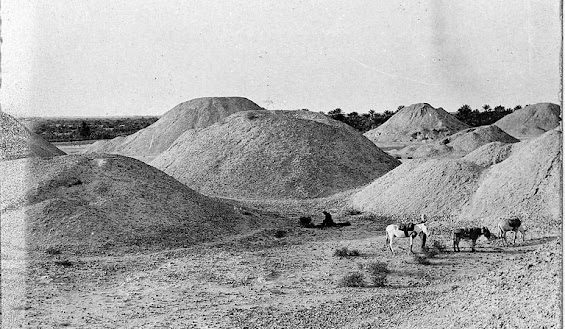Genetic Glimpses: Resilient Bahraini Ancestors and the Mysteries of Dilmun
Malaria Resistance Mutation Detected in Ancient People in Bahrain
Ancient DNA Unravels Middle Eastern Enigma:
• The scarcity of preserved ancient DNA in the warmer Middle Eastern climate contrasts with findings from cooler regions.
• The identification of the G6PD Mediterranean mutation in three of four ancient Bahraini individuals offers potential insights into malaria resilience.
• This exceptional genetic discovery underscores the potential of ancient DNA research to illuminate historical populations and their genetic adaptations.
Dilmun: A Beacon of Prosperity and Health:
• Dilmun, an influential ancient kingdom in modern-day Bahrain, thrived as a pivotal trading hub.
• The presence of the G6PD Mediterranean mutation in the Dilmunians suggests a genetic defense against malaria, contributing to their historical success.
• Dilmun's UN's favorable geography, climate, and freshwater sources may have played a role in fostering its prosperity and population growth.
Genetic Lineage: Tracing Ancestral Ties in the Middle East
• The genetic ancestry of the Dilmunians reveals a blend of Iranian, Anatolian, and Levantine lineages, indicating a complex population history.
• The onset of agriculture around 6,000 to 5,000 years ago may have influenced the prevalence of the G6PD Mediterranean mutation.
• Present-day Arabians and Levantines exhibit a genetic shift from their ancient counterparts, reflecting the impact of past migrations and demographic changes.
The Malaria Connection: Insights into Ancient Immunity
• The G6PD Mediterranean mutation, known for its association with malaria resistance, was identified in ancient Bahraini individuals.
• This genetic trait may have provided a defense mechanism against malaria in pre-Islamic Bahrain.
• The discovery highlights the role of genetics in ancient populations' ability to adapt to endemic diseases.
Environmental Influences: The Sahara and the Rise of Dilmun
• Periodic climate changes, including a green Sahara belt, may have impacted Dilmun's environment.
• The availability of freshwater springs may have contributed to Dilmun's emergence as a trade hub.
• The transition to an arid climate may have influenced the prevalence of malaria and shaped Dilmun's resilience.
Conclusion:
The discovery of the G6PD Mediterranean mutation in ancient Bahraini individuals offers a glimpse into the genetic resilience of past populations. These findings enhance our understanding of the genetic history of the Middle East, shedding light on the adaptive mechanisms of ancient civilizations like Dilmun.
Disclaimer:
The following article is a summary and analysis based on the original news article titled "Malaria Resistance Mutation Detected in Ancient People in Bahrain" written by Ruth Schuster and published on Haaretz on February 22, 2024. The purpose of this summary is to provide an overview of the key points discussed in the original news article and to make the information accessible in a simplified format. Readers are encouraged to consult the original news article for more detailed information and analysis. [Original News Article Link]




Comments
Post a Comment